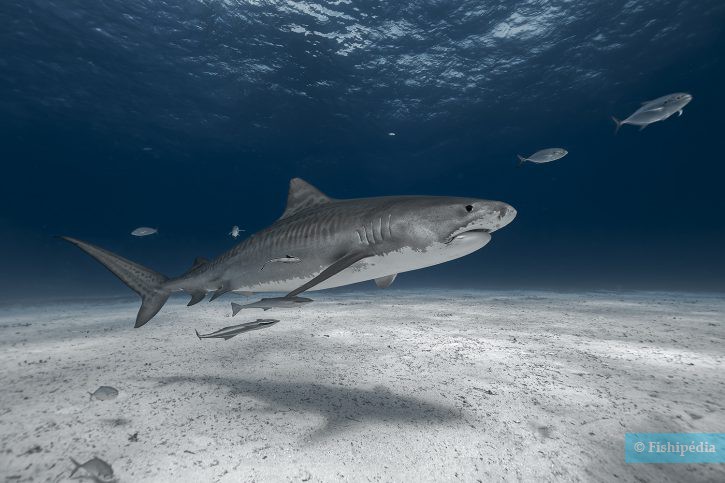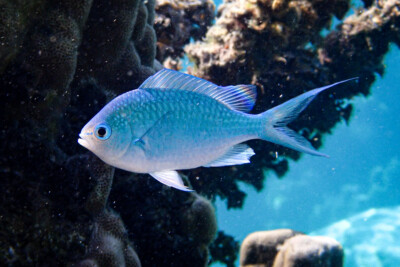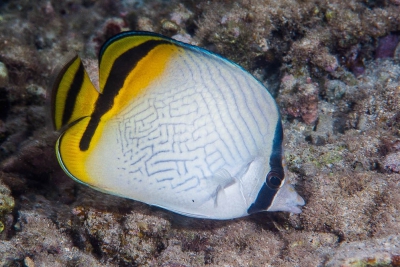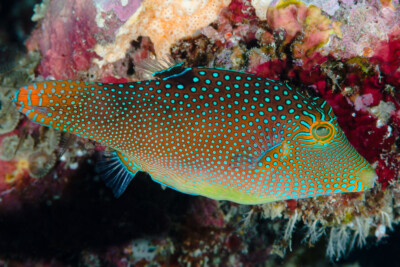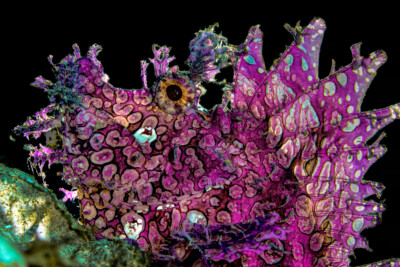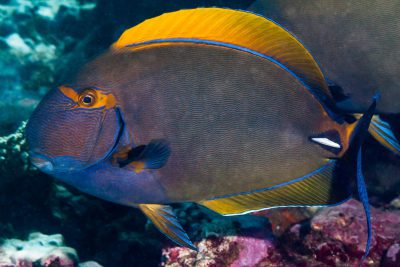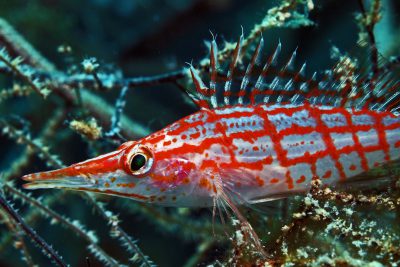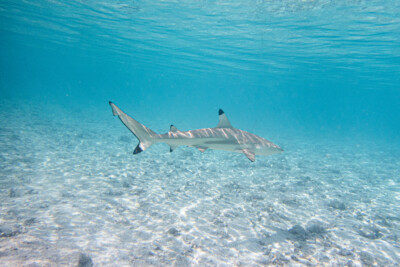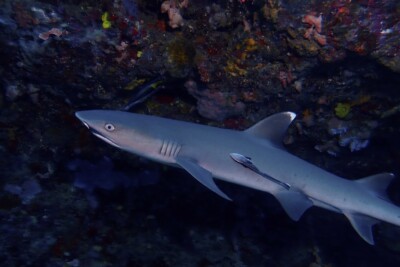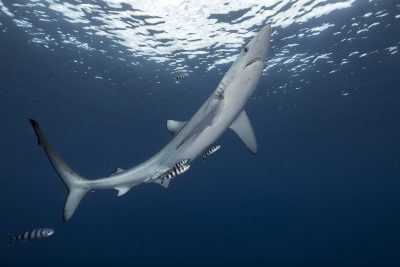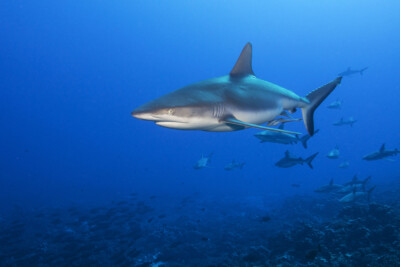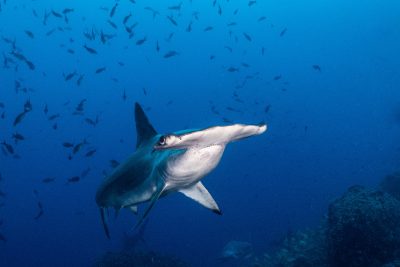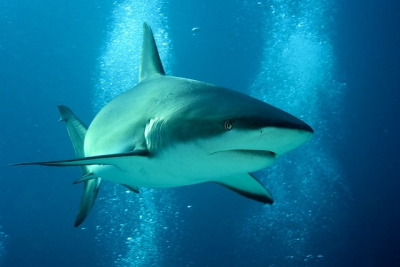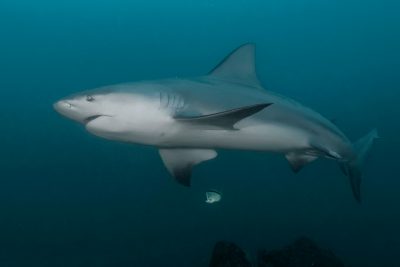tiger shark
| Scientific name | Galeocerdo cuvier |
|---|---|
| Descriptor | Péron & Le Sueur |
| Year of description | 1822 |
| IUCN category (World) | NT |
| Family | Carcharhinidae |
| Genus | Galeocerdo |
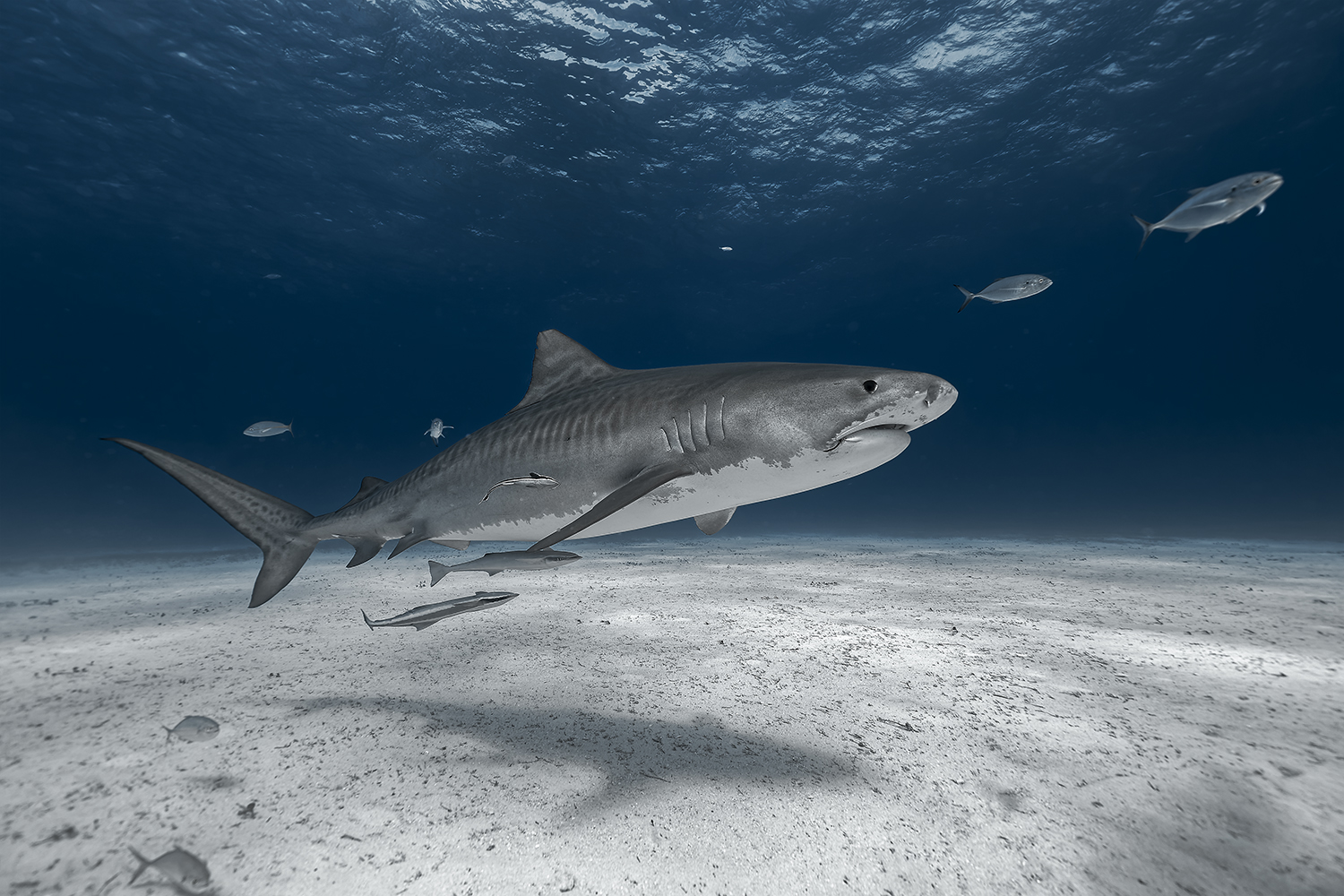

Introduction
The tiger shark can be found in temperate and tropical oceans. It is the third largest shark in the world, after the whale shark and the basking shark.
Who is it?
Morphology
-
Type
-
Average size300 cm
-
Maximum size600 cm
-
Longevity50 year
-
ShapeRectangular
-
Patternvertical stripes
-
Type
-
Average size300 cm
-
Maximum size600 cm
-
Longevity50 year
-
ShapeRectangular
-
Patternvertical stripes
How to recognize This fish ?
The tiger shark is easily recognizable by its wide, square, flat head, as well as the characteristic stripes along its sides that give it its common name.
Unlike most sharks, which have a pointed snout, its snout is short and flat.
This species has a sleek body, with a gray back and darker stripes, and a white belly.
Like most sharks, it has five pairs of gill slits. Its teeth have a characteristic saw-like shape. Its caudal fin is heterocercal, with the upper lobe longer than the lower lobe. Juveniles have a characteristic spotted pattern. As they mature, the spots transform into stripes.
Sexual dimorphism
Male tiger sharks, like rays, have a pair of claspers. These are appendages derived from the modification of the pelvic fins that allow the transfer of sperm to the female's cloaca. Males can only use one at a time.
Behaviour & Life cycle
-
dietcarnivorous
-
Sociabilitysolitary
-
territorialNo
-
Way of livingdiurnal
The tiger shark is a solitary fish that cruises the seabed in search of food. It is an opportunistic hunter that preys on young or old animals that are easier to catch.
For example, in New Caledonia during the humpback whale breeding season (August-September), it feeds on placentas and sometimes whale calves.
Despite its reputation as a bloodthirsty killer, the tiger shark does not attack systematically to kill. Most often, it makes an initial "bite-and-see" bite to estimate the nutritional quality of the prey and decide whether to consume it or not.
Once it has targeted and tasted its prey, it bites and makes large lateral movements to saw and tear off large chunks.
Reproduction
-
Reproductionovovivipare
The tiger shark is an ovoviviparous fish that reproduces in pairs around 6 to 8 years of age (from 2.5m to 3.5m). After a gestation period of over a year (up to 16 months), this species can give birth to more than 30 juveniles measuring between 68 and 85 cm.
Life-threatening species
-
VenomousNo
-
BiteYes
Origin and distribution

Conservation status of populations (IUCN)
What is its habitat?
Natural environment characteristics
-
Depth0 - 800 m
-
EnvironmentActive pelagic
Biotope presentation
Tiger sharks are most commonly found at depths less than 800m. They can, however, be found at other depths as well.
Although they have a wide distribution, they only rarely venture into oceanic environments. This species plays an active role in regulating populations, such as albatrosses in Hawaii.
Species of the same biotope
Fishkeeping
Not recommended
We do not recommend keeping this species in an aquarium. It has unpredictable needs which, if not met, generate significant stress, potentially leading to a shorter life expectancy, an interruption of its growth or the development of pathogens.
To go further
Sources & Contributions
Participation & Validation
The Fishipedia team and specialist contributors are committed to providing high-quality content. However, although the information comes from scientific sources or testimonials from specialists, the cards may contain inaccuracies.

Adrien Falzon

Benoit Chartrer
Translation
Translation done with the valuable contribution of our translators, who make this information available to a wider audience. We sincerely thank them for their commitment.
Scientific partners
Tags
#Carcharhinidae
#Galeocerdo
#shark
#Bay of Bengal
#Gulf of Mexico
#Persian Gulf
#Great Barrier Reef
#mer d'Oman
#Tasman Sea
#Caribbean Sea
#Philippine Sea
#Sea of Japan
#Red Sea
#South East Asian Seas
#Indonesian seas
#Atlantic Ocean: North Coast of Brazil
#Océan Atlantique Est Afrique - Angulhas
#Océan Atlantique Est Afrique - Bengala
#Océan Atlantique Est Afrique - Golfe de guinée
#Northwest warm temperate Atlantic Ocean
#Southwest Tropical Atlantic Ocean
#western Indian Ocean
#Galapagos
#Tropical Eastern Pacific
#Western Tropical Pacific Ocean
#Réunion
#French Polynesia
Species of the same family
Species of the same biotope
